The Mongol Horde (Oeuvres). Real Mongolian Food (Not the BBQ!). KCRW's Good Food. Saturday, June 18th, 11AM on 89.9 FM KCRW or KCRW.com.
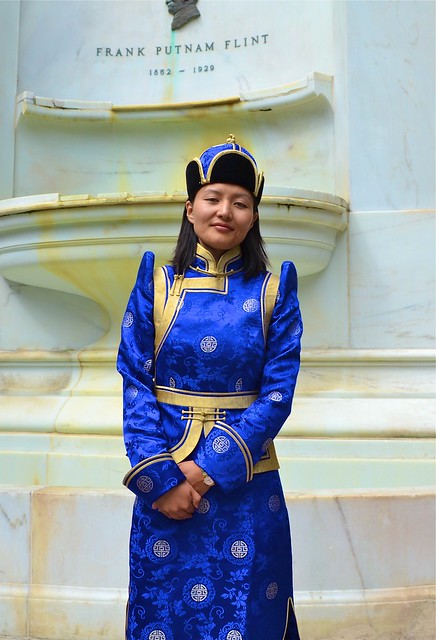
Zula Damdin, founder of Mongolian Cultural Days.
Of all the diverse and unique cultures in the vast metropolis that is Los Angeles, the Mongolian community is surely among the rarest and least known.
Only about 3000 Mongolians reside in Los Angeles. Many of those 3000 choose to live in the area of Koreatown. 3000 people may not sound like much until you learn that Mongolia is one of the most sparsely inhabited independent countries in the world with just under 3 million in population within a 603,909 square mile border.
This year was the first ever that the Los Angeles Area Mongolian Association organized the Mongolian Cultural Days event to celebrate the culture and cuisine of this famously proud, nomadic and hospitable people.

A Mongolian "first-person shooter": ankle bone shooting.
It's easy to think you've experienced it all when living in a city like Los Angeles, but the same way this city can lull you into ennui, it can also surprise you by dropping something completely foreign and refreshing onto your lap.
While watching Mongolian men match skills in a baffling (to this observer) game of Ankle Bone Shooting with game pieces called shagai made from sheep bone, I had to look around to see if I was in fact still under the shadow of Los Angeles' city hall building.
The game looked like fun especially if you took a few swigs of Chinggis, a triple distilled Mongolian vodka that's supposedly found in certain K-Town liquor stores. "Mongolian vodka?" you ask, scratching your head. Consider that Russia is a cozy neighbor and the winter nights can be awfully chilly (60°F below zero), then a Mongolian vodka sounds perfectly reasonable.
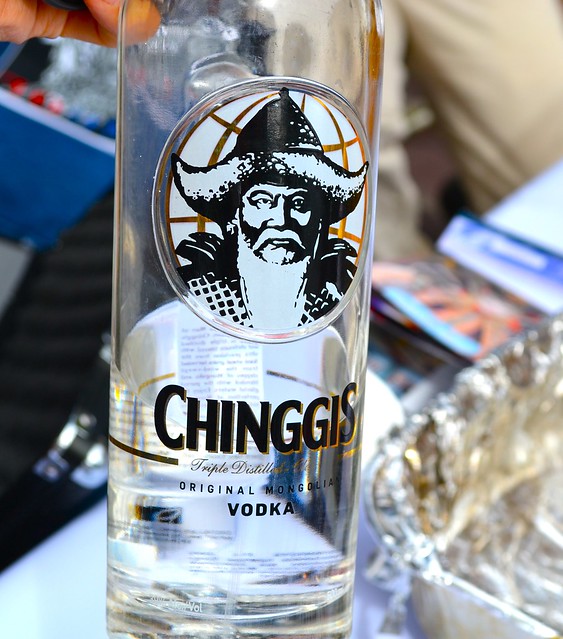
Genghis Khan drink you under the table!
It can be said that Mongolian cuisine is extremely limited due to its lack of vegetative and animal resources. Most plants can't survive in the country's harsh climates and "the sustained severe cold causes massive loss of livestock herds almost every year" (Mongolian Cultural Tour). Therefore, the sustenance that remains is mostly meat from hardy animals ranging from cattle, yaks, camels, sheep to even marmot.
Although none of the more exotic fare was served at the event (even after several inquiries of where the secret marmot booth was located), there were good examples of Mongolian simple and small bites like huushuur, a Chinese influenced fried dumpling made of beef.
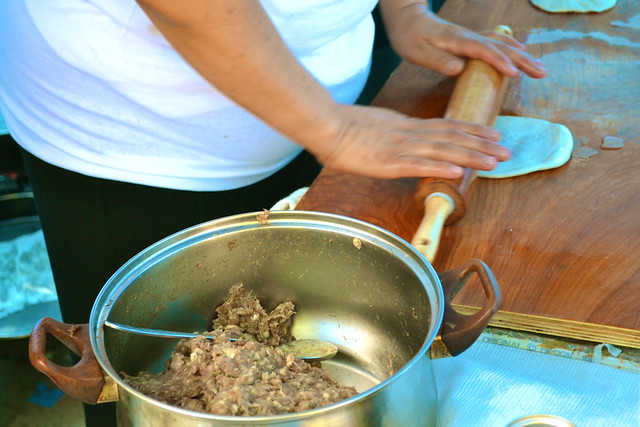
Huushuur, a Mongolian must.
Because of the limited food resources and spices available in Mongolia, it follows that the flavor spectrum is also limited. There are basically 2 major flavor categories in authentic Mongolian cooking: salty and sour. Even the "desserts" have a pronounced sour profile because of the prevalent use of fermented dairy products incorporated into them.

Huushuur being hand modeled by my Mongolian food guide, Sarnai Shuherjav.
The huushuur dumpling is fried (traditionally in mutton fat). Other meat filled dumplings are steamed (buuz) or boiled (bansh). In Mongolia, the majority of the fillings are usually meat or mutton. Occasionally, camel or yak meat are also used.
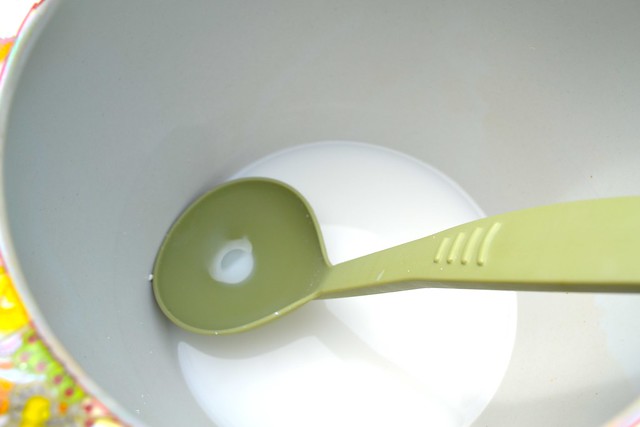
Horsing around with booze!
Whenever you see someone ladling out an unidentifiable beverage into seemingly innocuous polystyrene cups and then commands you, the guy with the Nikon, to stop taking photos, then you know whatever is being served is definitely worth drinking.
So naturally I got myself a cup of the mysterious juice called Airag which turned out to be fermented mare's milk. With the dominant flavor of, you guessed it, sour, this is milk from a female horse with about 2 percent alcohol in it when all is said and fermented. It's a pleasant drink once you acclimate to the special taste.
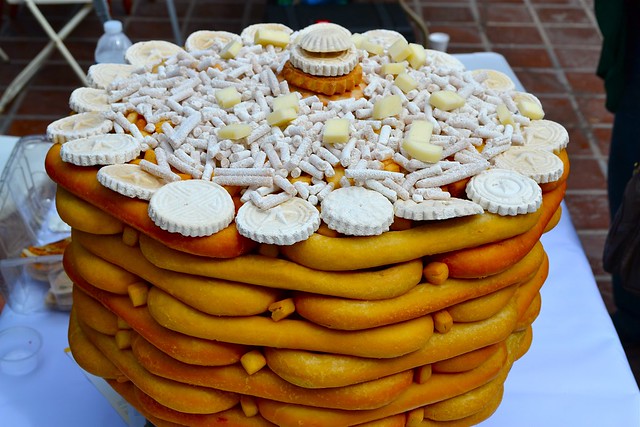
If Mongolia had a Krispy Kreme, this is what they'd sell.
Other than using dough, “Mongolian doughnuts” are not much like the doughnuts most of us dunk into our coffee.
Often times, stacks of these pastry items called harvsai are gifted to an elderly or important person during festivals or New Year celebrations. This display is stacked in odd-numbering layers with the width and height based on the age or importance of the person being honored — the higher the stack, the more important or older the individual.
Aruul are the ornate dried milk curds that embellish the top of the harvsai stack. Again, the flavor of these curds are distinctly sour.
If you're wondering when I'm going to get to the topic of Mongolian BBQ, it's now. It's a subject that surely still has Genghis Khan spinning in his grave and will certainly liven up any Mongolian-American conversation.
Essentially, the Mongolian BBQ tradition that we know in the U.S. — of loading up your plate with meat and vegetables then having the cook toss everything onto a flat circular grill and seasoning the food with oils and sauces, and, finally, dumping the whole hot mess into a large bowl — is not Mongolian food. It's not even really barbeque. It was made in Taiwan in the 1970s.
Join me in learning more about Los Angeles' fledgling Mongolian community and its interesting cuisine this Saturday, June 17th at 11AM on the Good Food show 89.9FM KCRW and KCRW.com.
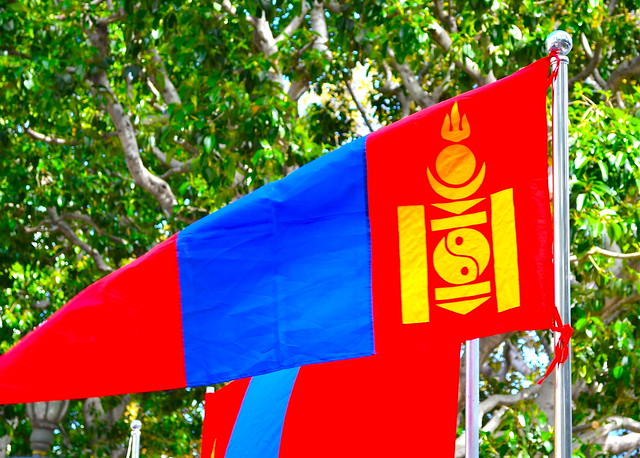
Comments
Do you know of any Mongolian restaurants in LA?